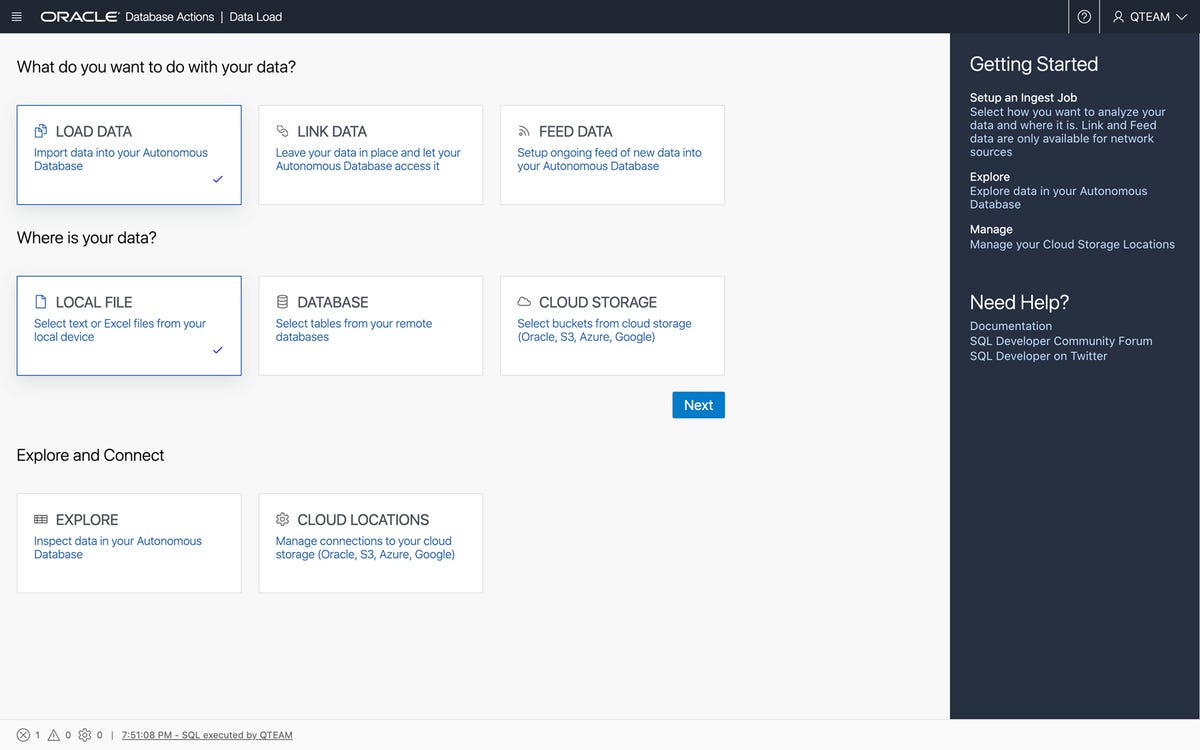Oracle on Wednesday unveiled the latest version of its Autonomous Data Warehouse, equipped with drag-and-drop UIs and AutoML capabilities that make it dramatically easier to use. With no SQL needed, analysts and business users should be able to leverage the tool without the help of data engineers or data scientists.
The upgrades make data warehousing accessible to any line of business, Oracle says. Once that happens, “the market opens up in a massive way,” Steven Zivanic, Oracle’s Global VP of Database and Autonomous Services, said to ZDNet.
He likened the development to the introduction of PowerPoint into offices.
“Years ago, there used to be specialized groups within large corporations that did your PowerPoints, or made physical slides for projectors,” Zivanic said. “Those groups don’t exist anymore, right? They were replaced by PowerPoint or Apple Keynote software…. This is just another logical extension of that progression of simplicity.”
The Autonomous Data Warehouse Cloud, introduced in 2018, was the first service based on Oracle’s autonomous database. It debuted with machine learning to enable fast and simple data warehousing. The cloud platform competes with other SQL data warehousing offerings, such as Snowflake and AWS Redshift.
The latest version offers drag-and-drop interfaces for loading, transforming, and cleaning data.

It also helps users automatically create business models, as well as automatically discover patterns to generate insights.
“Traditionally with these information systems, you have to ask it a question,” Neil Mendelson, Oracle’s VP of product management for Big Data and Advanced Analytics, told ZDNet. “You have to know yourself: One, that you’re looking for a needle, and Two, that it may be in a haystack.”
By contrast, he said, “We’re looking for patterns and anomalies, which we can point out to the user. Maybe it’s something the person never thought to look for.”
The updated platform also has self-service tools to help data analysts and citizen data scientists to easily prepare data sets, build machine learning models guided by AutoML and deploy models.
With these tools, Mendelson explained, there’s no need for the user to know which algorithm to use with a certain data set. He compared a citizen data scientist to a driver hopping in a car — just because they know how to drive doesn’t mean they know the algorithm that dictates the car’s air/fuel ratio.
“Does anybody care? Of course not,” he said. “You get in the car, put in the gas and go. So let’s see how we can do that for a data analyst.”
For developers that want to deploy their insights into applications, Oracle offers Oracle APEX (Application Express) Application Development, a low-code application development tool built directly into its database, as well as RESTful services.
“We’re opening this up to a much broader audience that allows people to serve themselves… making the business a lot more agile,” Mendelson said.




